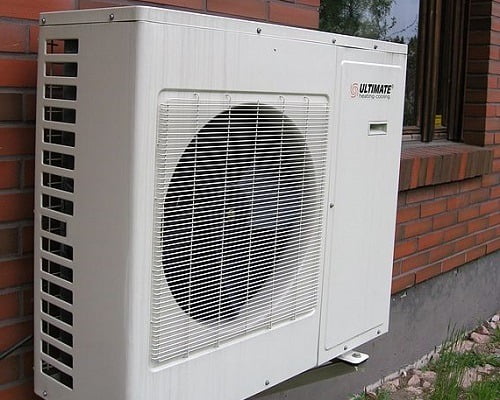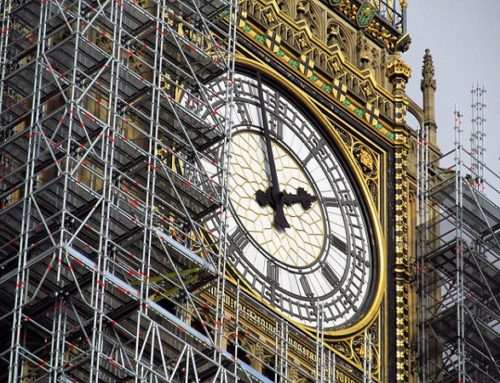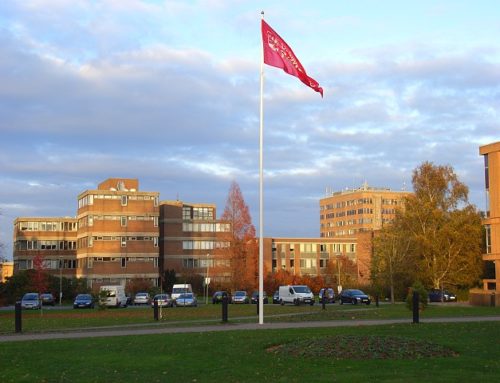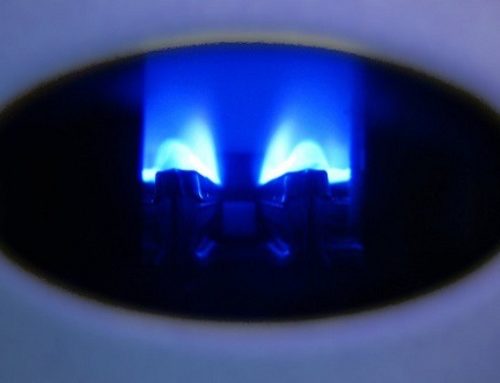by Rob Reid
7 minute read
Since last summer, I’ve learned a lot about heat pumps, all in the name of deciding whether I could go green on heating my house without leaving my bank balance in the red. When I last wrote about my dilemma, I reached the classic consultant’s view that more research was required. Since then, I’ve been carrying it out, and it’s time to make good on my promise to report back on what I found.
There’s been no shortage of information and advice. I have spoken with installers, technical experts and colleagues, and mulled over the findings of Eunomia’s contribution to the evaluation of the Renewable Heat Incentive (RHI) for DECC. All this research has been aimed at informing three main decisions:
- could any kind of heat pump be a practical way to heat my house;
- is there much to choose between air source and ground source heat pumps; and
- could any heat pump be cost-effective?
I can’t say that the views I’ve reached are the ones I expected or wanted to, and other people’s circumstances could be different, but I can only tell you what I found.
Cold comfort
If it’s going to do its job, the first thing a heat pump must be able to manage is to keep a house warm and comfortable. One concern I had was about retrofitting heat pumps into existing radiator-based systems. A heat pump produces lower temperature water than my relatively new gas boiler, which could mean the radiator capacity needed to be increased to provide adequate space heating. I now understand that heat pumps can be successfully retrofitted, so long as appropriate levels of insulation are installed. Heat pumps are sized to satisfy worst day heat losses, and insulation ensures that heat losses are minimised and the heat pump is sized accordingly.
The most cost-effective way to improve comfort levels, regardless of the source of heat, is typically to invest in energy efficiency measures like insulation that reduce heat demand. That’s all the truer if you’re looking to achieve the best results from a heat pump. A fellow Eunomian commented on my previous blog post that, since my house doesn’t have cavity walls I ought to consider solid wall insulation. They had a point, and it’s possible that the new Energy Performance Certificate (EPC) I would require before applying for the Domestic RHI – the key subsidy to help with the costs of a heat pump – would make the same recommendation.
It makes sense – if my century-old house is cold and draughty, any form of heating is likely to struggle to consistently make it warm and comfortable. If I feel cold, I am more likely to increase the temperature on heating controls. That’s a problem for heat pumps, as they tend to be sensitive to temperature variations, and changing the settings can have significant impact on their efficiency and the amount of electricity they use.
However, insulating an old house isn’t straightforward. Internal wall insulation may have been option when I was renovating my house a couple of years ago, but the potential gains now seem outweighed by the level of disruption it would cause. The same wouldn’t apply to external insulation, but it would have a pretty serious impact on the aesthetics, and therefore the likely value, of a building whose appeal lies partly in it being a stone cottage. If I couldn’t qualify for RHI without it, I would have to take a closer look at how it could be done, but although the insulation would clearly help get the best from my heat pump it is still an unappealing prospect.
Entrenched opinion
Is there anything to choose practically, rather than economically, between ground source and air source heat pumps? Well, planning rules and installation considerations come into play here
An air source heat pump is relatively straightforward to install, but can require planning permission. Whether it does depends mainly on the size of the heat pump and its proximity to the boundary, and it could mean that acoustic tests are needed to demonstrate that there are no noise issues. The planning application would cost £200, while the acoustic tests may be as much as £700: these are two more factors I might need to feed into my economic assessment.

Do the subsidies available mean everyone should be a big fan of heat pumps? Photo by Ppntori, via Wikimedia Commons.
Ground source heat pumps are considered permitted development so I would not need planning permission. However, installation is complicated by space considerations. The heat pump draws heat from the soil and to do this it needs many metres of ground loop piping to be buried. The cheapest way to do this is with horizontal trenches (around £1,000/kW), and I thought that my house might be one of the lucky few with a garden big enough to take this approach.
However, from my research, I now understand that I would not have sufficient space in my garden, and boreholes would be my only option. For boreholes, I have been quoted costs of £2,000/kW of installed capacity, double the price of trenches – and it gets worse. Due to access restrictions, I would not be able to borehole rigging equipment in my garden, and the local geology also seems problematic. A neighbour invested digging boreholes only to find that there were issues with the quality of the ground that made it impossible. So for me, a ground source heat pump is out of the question.
Qualifying heat?
If a heat pump is to be viable, the initial capital has to be paid back by savings on running costs due to reduced energy demand, with whatever subsidy is available to help. The initial capital and installation costs can vary significantly depending on factors, including the type of system, its size, complexity, heat demand and heat losses. However, the typical costs for a one-off domestic installation such as mine would be £10,000 – £14,000 for an air source heat pump and £20,000 – £24,000 for a ground source pump, although the latter is particularly sensitive to variations. At that price, a heat pump isn’t an investment decision that should be taken lightly.
So what sort of return would I get on all that investment? A heat pump that is performing well typically requires one unit of electricity to provide three or four units of renewable heat. On this basis, with a heat pump in use I would still expect to receive an electricity bill – perhaps a rather bigger one. However, this should be offset by big saving on gas – between two-thirds and three-quarters of my energy use, if the system is performing as expected.
Another financial benefit comes from the Domestic RHI. I would only be eligible if I installed an air-to-water heat pump or ground source heat pump for space and/or water heating. I would also need an EPC, and would have to take action to implement any cavity wall insulation and loft insulation it required before applying. Finally, I would have to pay for a Green Deal assessment.
Once all that is done, I’d be able to receive RHI payments based on the kWh of eligible heat output. Domestic RHI tariffs are 7.3p/kWh for an air-to-water heat pump and 18.8p/kWh for a ground source heat pump. Quarterly payments are made over seven years, typically based on estimated heat generation from the EPC.
So, how long would it take before my initial investment was paid back? I have illustrated this for both air-to-water and ground source heat pumps in the table below.
Taking all of the above into account, an air-to-water heat pump should provide me with a better return on investment – fortunate, since a ground source heat pump isn’t an option for me. However, even with the RHI payments it would still take 10 years to pay back the initial costs and the whole it doesn’t seem like a sensible economic decision.
Whilst the challenges homeowners face when exploring renewable heat are pretty daunting and there’s a lot of information to get your head around, I am still going to keep an eye on the economics. Capital costs may come down or efficiency may improve as the technology becomes more established, or there may be changes to the Domestic RHI that make it more easily accessed. But for the time being, as the owner of an old house with a not-quite-big-enough garden, I’m forced to conclude that a heat pump isn’t for me.








Thanks for an interesting article. I’m currently renovating a cottage and have made it ‘technology agnostic’ to quote the UK Government’s 2018 paper on decarbonising home heating. The agnosticism should enable the house to flexibly adopt future heat sources be they biogas, B30K oil, heat pumps (probably hybrid in an old property) or renewable electricity. Agnosticism has meant installing underfloor heating and as much insulation as is allowed within planning restrictions. Viz: No external cladding in national parks.
Internal solid wall insulation is a dangerous thing to do, so well done for not doing it. It removes any thermal flywheel effect that keeps a house cool in summer and the danger lies in interstitial condensation rotting out your floor joist and lintels where they are embedded in walls. To move forward society will need to rethink the rules around external wall insulation.
I don’t see why a 10 year payback is too bad. Everyone seems quite happy with a 25 year mortgage. It’s like paying your energy bills for the next 10 years but there are ways of financing this even if you don’t have the cash. The energy saving trust Scotland were offering zero interest loans which meant that (at least when I last checked) more people in Scotland have installed renewable energy, though I think these have been absorbed into the Green Deal finance. This does carry rather high interest rates but is available to everyone. The difference in having a low cost energy after that is enormous. Its a great investment for a retirement with low bills.
A ten year payback and a 25 year mortgage are as different as apples and a mountain. It’s all about the best use of your money. If you can find two consecutive things with five year paybacks, at the end of ten years you’ll be twice as rich as investing in a ten-year payback (to an engineer’s approximation, i.e. I’ve vastly over-simplified :-).
Bob:
I have about a billion gallon storage of mine water at 55 degrees F. What can a heat pump raise that temperature to? This is just the start of an investigation of an application.
Ted Johnson
Thanks for taking the time to share your research, it makes interesting reading. It also rather confirms my instinct that at the moment government schemes should primarily be focused on improving the insulation levels of existing housing stock.
Thanks for your comment. I agree that as much emphasis in gov policy should be placed on energy efficiency, but they should also be coupled with renewables. In the right situation, energy efficiency + renewable heat + RHI payments make an attractive proposition, especially for those off grid, for which the RHI was designed in mind. Having said that, my neighbour (who’s not off grid) has just had his RHI application approved. He installed an air-to-water heat pump connected to new radiators as he had no existing central heating system. He was required to install cavity wall insulation, and is now RHI accredited, using an air-to-water heat pump and the insulation will be ensuring that the heat pump performs as expected and he’s not wasting the energy he’s generating. I just wish the gov could do more to reduce EPC and Green Deal Assessment costs which must put some people off going ahead with this form of investment.
In VERY specific contexts, heat pumps can be an excellent solution.
But heat pumps – especially ASHP – on a draughty, uninsulatated single-wall building with small radiators?
If the RHI is making this look like an even slightly attractive option, then it joins the lengthy list of damning things that really need to be changed about the RHI.
I agree, this policy should be intended for those most in need (i.e. Off-grid) and those that can maximise the benefits – not just in RHI payments, but reduced energy demand, warmer homes, better health and wellbeing etc. the pre-requisite of energy efficiency requirements prior to RHI accreditation is ensuring that only those with with well insulated homes are eligible to apply – which is a good thing. Heat pumps are definitely the right option in certain situations – interviews I carried out as part of RHI Evaluation supported this, but they’re not right for everyone and especially not me in my current situation. Thanks for taking interest in my article.
I’ve just been interviewed for a telegraph article on this which should come out on Sunday. (Not our normal paper of choice!) We installed our ground source heat pump nearly 2 years ago. We are due to get our first RHI payment next week as we had a renewable heat premium to tide us over so were not eligible to apply straight away. The RHI calculator was very conservative and gave a 2.5 ratio of electrical input to heat output whereas the actual figure is more likely to be around 4. Even with this we will recoup the entire amount we paid on the heat pump installation in the 7 years of the scheme and our energy bill for heating is about £350 a year rather than around £700 on oil after we had done all the insulation (probably £3000 before this). We already had solar thermal, wind turbine and solar PV. We now produce just over 8000kWh a year of electricity and use around 7000kWh a year so are net exporters. Financially putting the whole package together we will have paid back the cost of installation and be receiving and income into our retirement rather than paying energy bills. It makes sense for the environment and financially. Even if it takes you 10 years to pay it back, Rob long term energy bills will only be going up and I cannot see how you have concluded it is not financially viable.
“I cannot see how you have concluded it is not financially viable.”
I’d have thought it’s pretty clear how. He’s even set out the figures in a table. Ten-year payback.
You might want to consider the possibility that not everyone’s got as much disposable income as you. (And to think some say that FITs and domestic RHI are just a subsidy for well-off home-owners!)